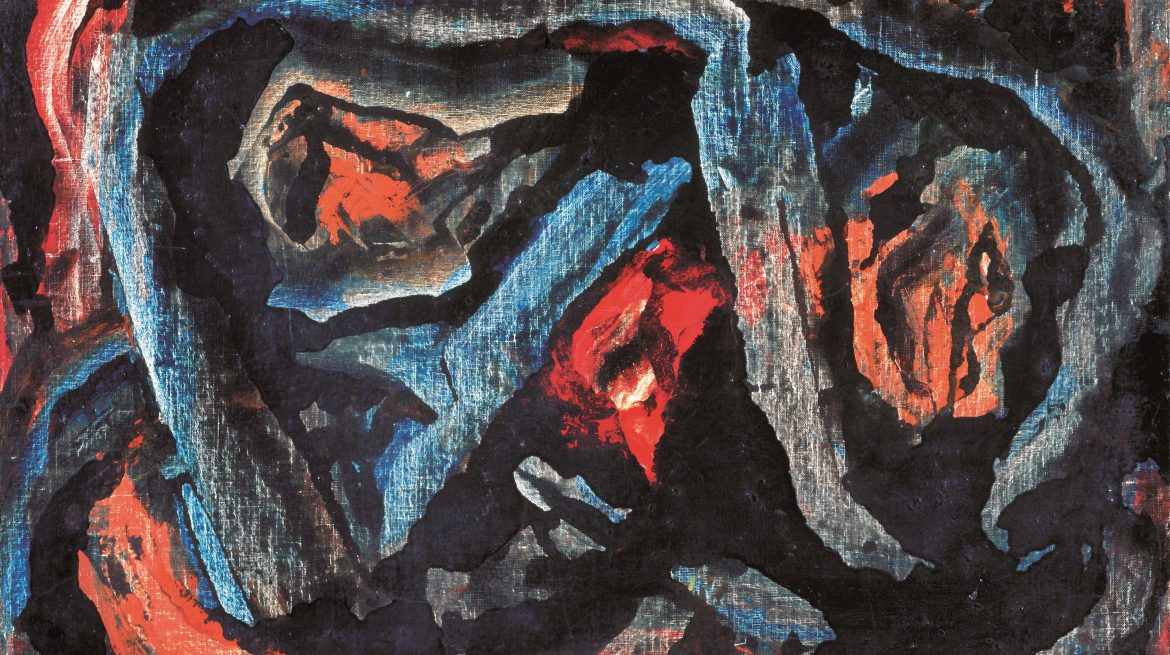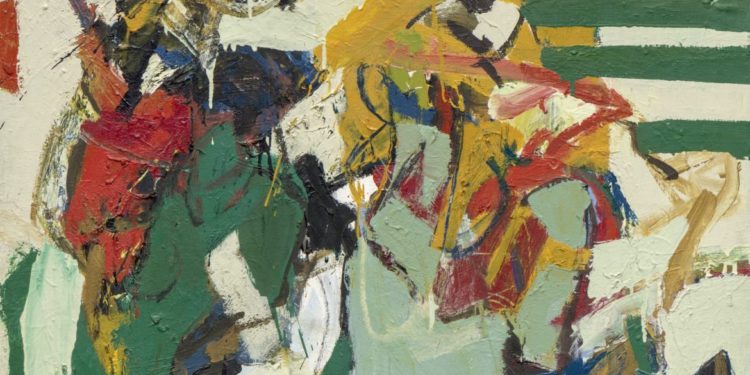Long-established white male artists like Jackson Pollock, Willem de Kooning, and Mark Rothko have been known as the pioneers of abstract expressionism. Yet, female artists who contributed significantly to abstract expressionism are still mostly unknown and frequently forgotten.
London’s Whitechapel gallery celebrates “the practices of the numerous international women artists working with gestural abstraction in the aftermath of the Second World War.”
An exhibition entitled Action, Gesture, Paint: Women Artists and Global Abstraction 1940–70 features 150 paintings by 80 international women abstract expressionism artists, including American artists Lee Krasner (1908–1984) and Helen Frankenthaler (1928–2011), alongside lesser-known figures such as Mozambican-Italian artist Bertina Lopes (1924–2012) and South Korean artist Wook-kyung Choi (1940–1985).
This exhibition broadened the geographic scope of Abstract Expressionists more than in the US. Women abstract expressionists around the world share common “themes of materiality, freedom of expression, perception, and gesture” in abstract visual language, from “Art Informel to Arte Povera in Europe, and from calligraphic abstraction in East Asia to experimental, highly political practices in Central and South America, and the Middle East.”

Each artist owns their abstract expressionist gestures. For example, Helen Frankenthaler’s soak-stained technique uses thinned-down paint to create abstract paintings. Behjat Sadr, an Iranian artist, with her representation of reality in “thick brush strokes of paint, layer upon layer, created semi-disciplined grids of color.” Wook-kyung Choi, an artist well known for her contribution to expanding the field of Korean Abstract Expressionism, experimented with various methods using shapes and colors, abstract mark-making, and collage techniques. Marta Minujn, an Argentine artist born in 1943, created extremely textured surfaces on the floor using sand, lacquer, chalk, and carpenter’s glue. As the surfaces dried, she covered them with thick coats of paint.

Abstract expressionist paintings by female artists also have political dimensions. The rough materiality of Gramcko has been interpreted as a reaction to the political upheaval developing in Venezuela. Erna Rosenstein created biomorphic landscapes in Poland, breaking Soviet socialist realism’s rules. Moreover, Bertina Lopes was actively involved in the movement in Mozambique to liberate it from Portuguese colonial authority. (The artnewspaper.com)

This exhibition also rediscovers a little-known yet important female abstract expressionist, such as the self-taught Ukrainian American artist Janet Sobel, who created innovative drip paintings a year before Jackson Pollock.
Action, Gesture, Paint: Women Artists and Global Abstraction 1940–1970 is on view at the Whitechapel Gallery, London, from February 9 to May 7, 2023.


